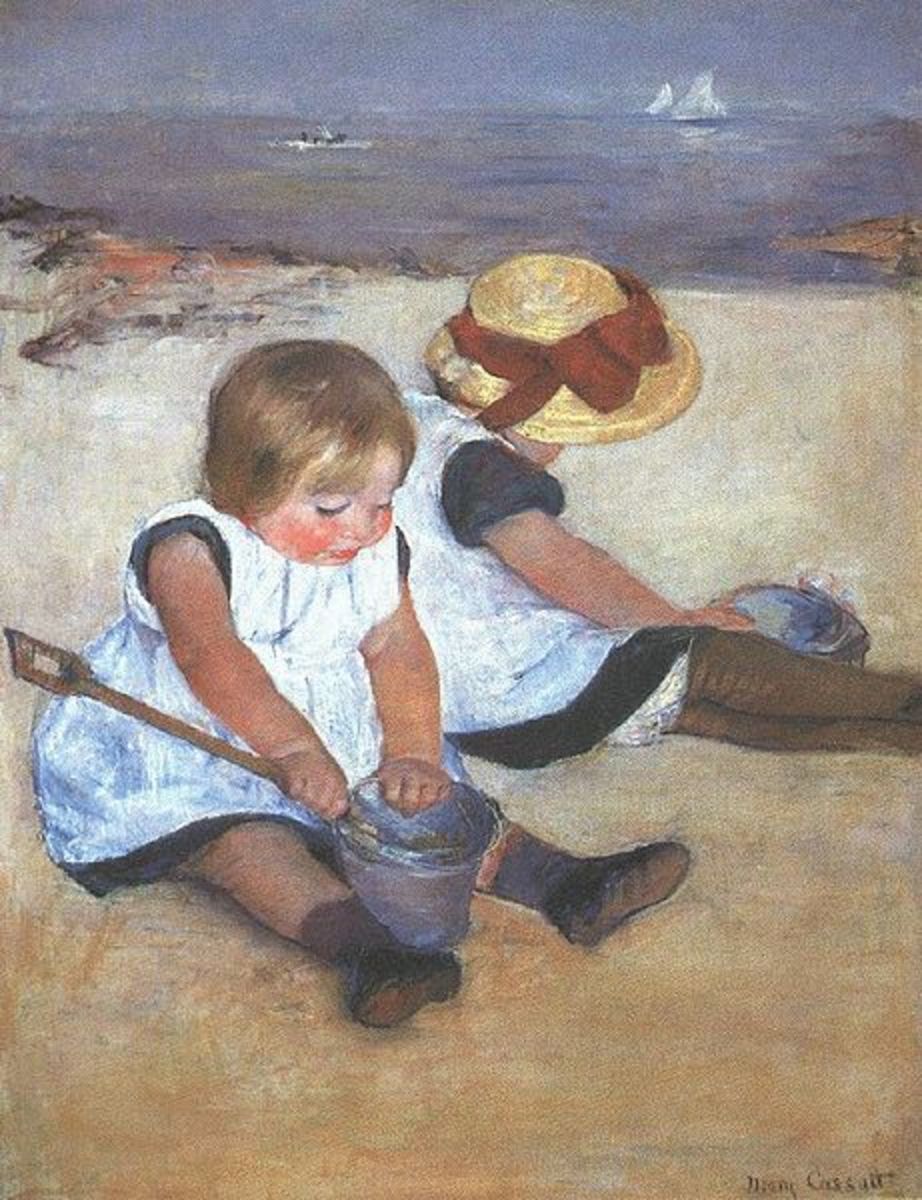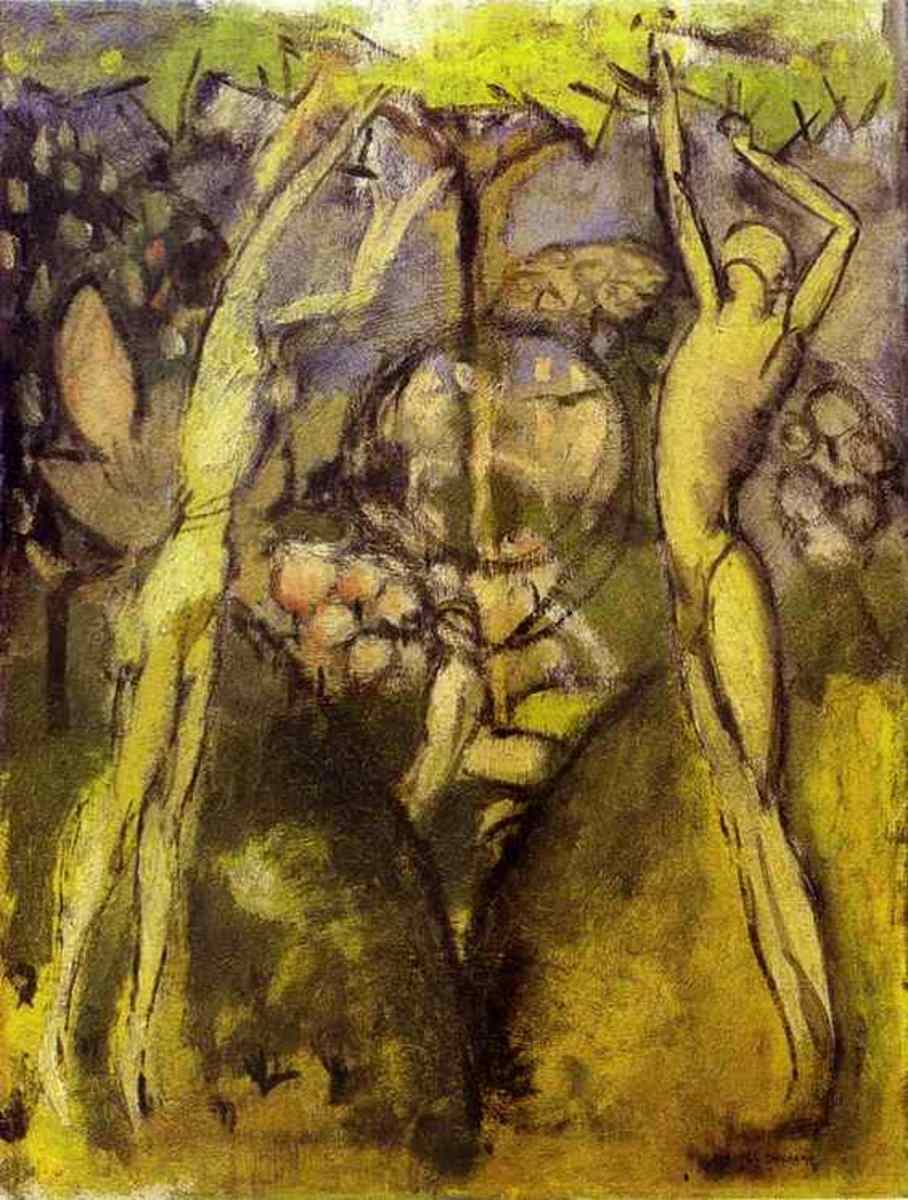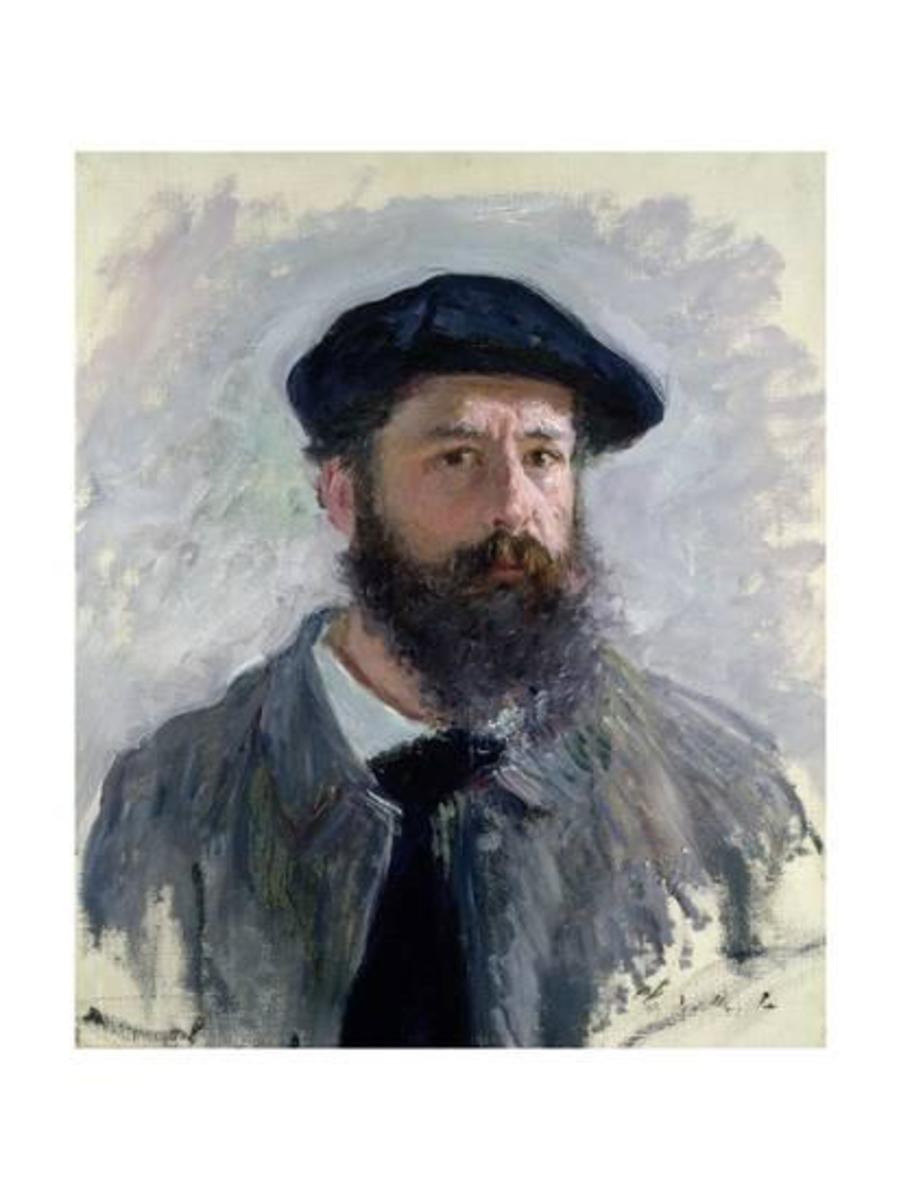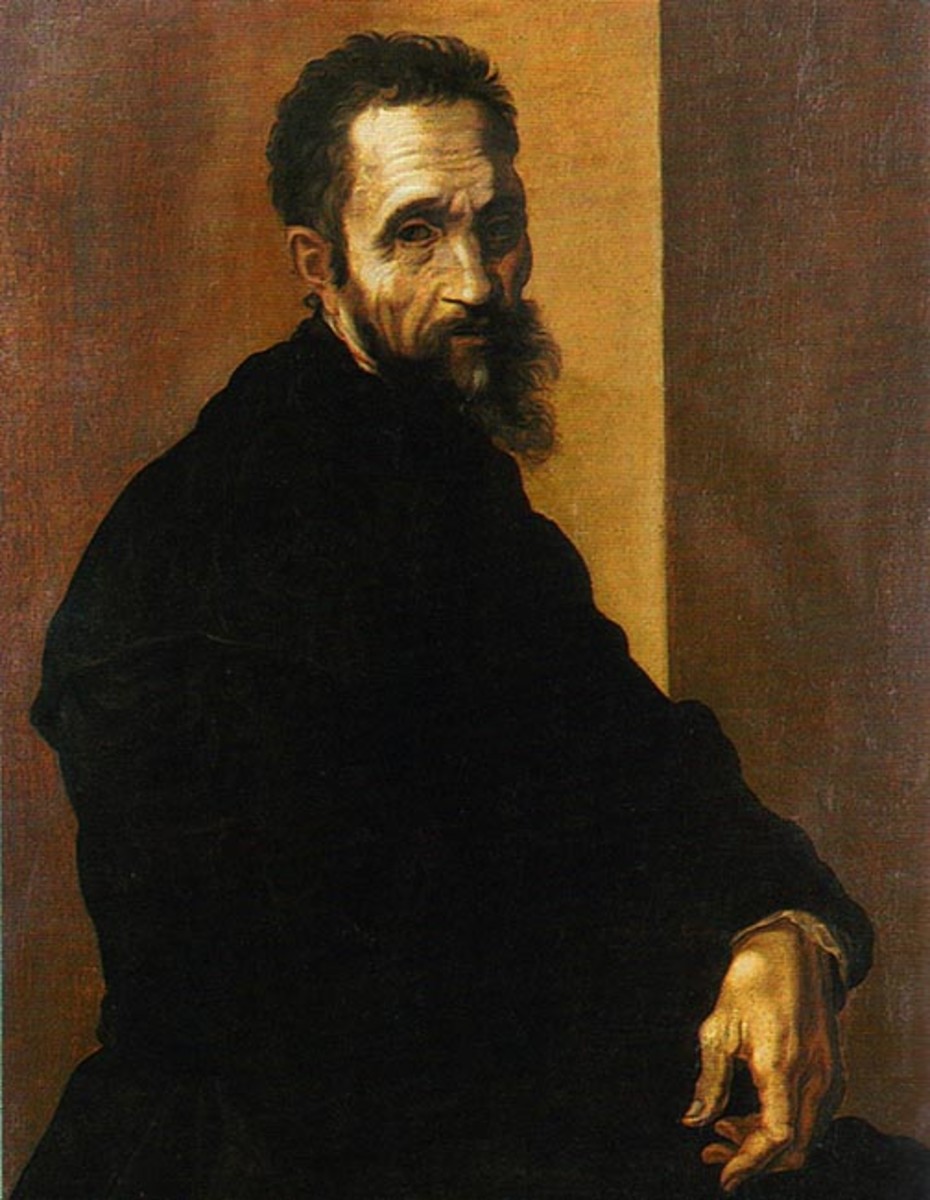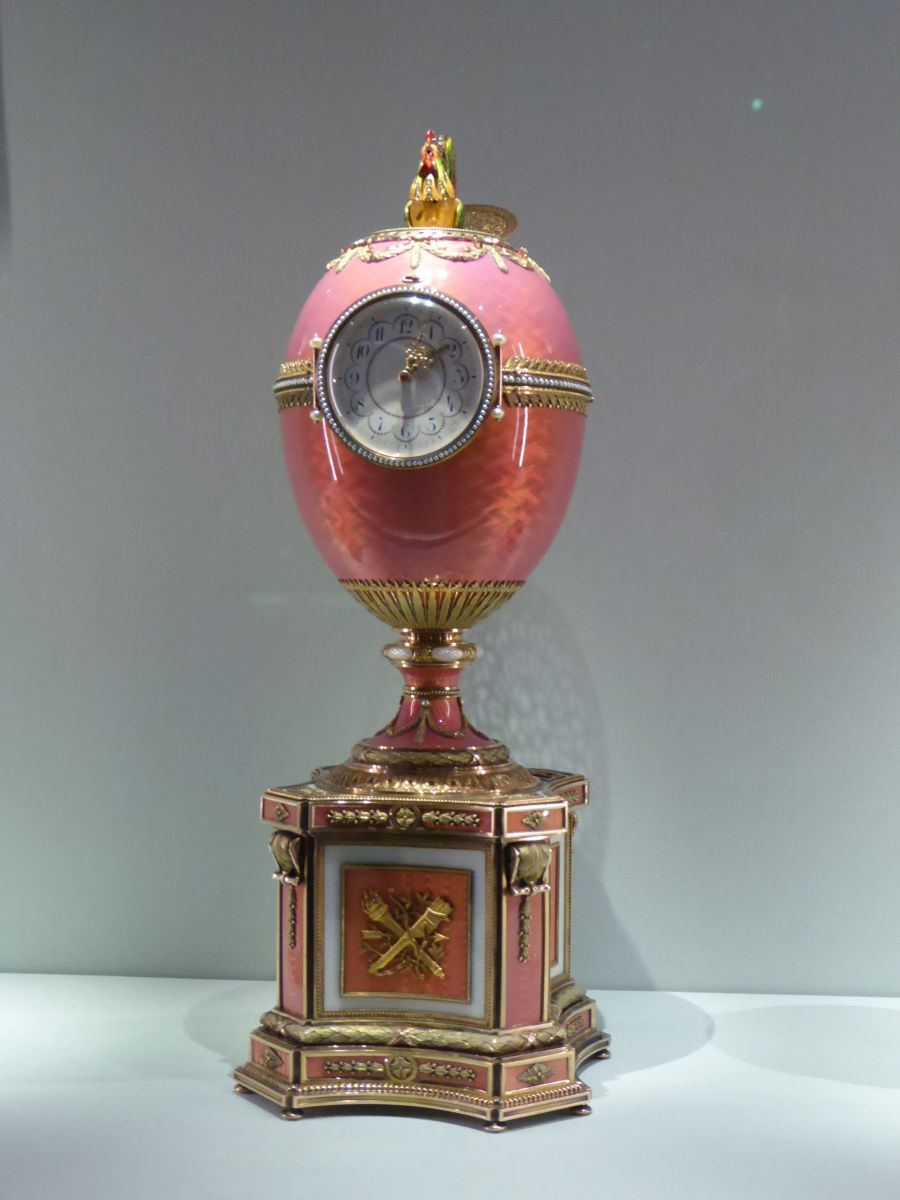Impressionist Artists: Edgar Degas - 5 Interesting Facts
Lorenzo Pagans and Auguste de Gas by Edgar Degas
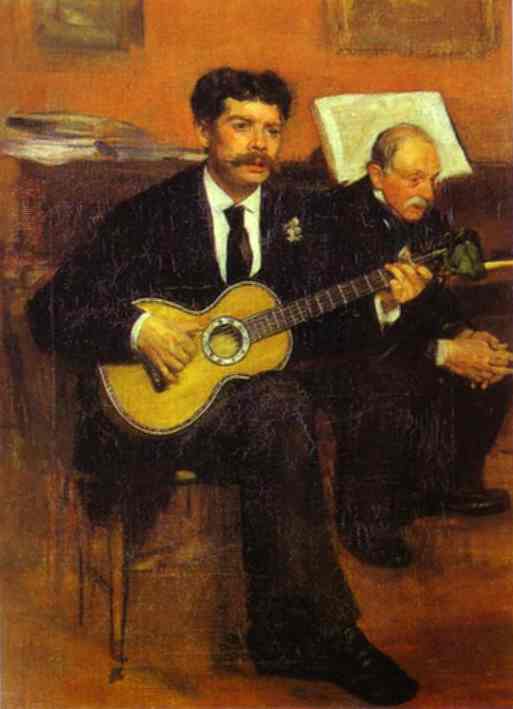
Background
Hilarie Germain Edgar de Gas was born on the 19th July 1834. Opera played a large part in his upbringing, with his mother (who died when he was 13) frequently singing operatic numbers and often giving recitals organised by his father. Before taking up art as a profession, Degas actually studied to become a lawyer. He served in the French National Guard’s artillery division during the Franco-Prussian war between 1870-71. In October 1872, Degas travelled to America and spent five months in New Orleans living with family. He was almost obsessed with the human form, especially women and at least later on in his career painted almost exclusively woman in various places, positions and stages of undress.
Gentlemen Jockeys before the Start - Edgar Degas
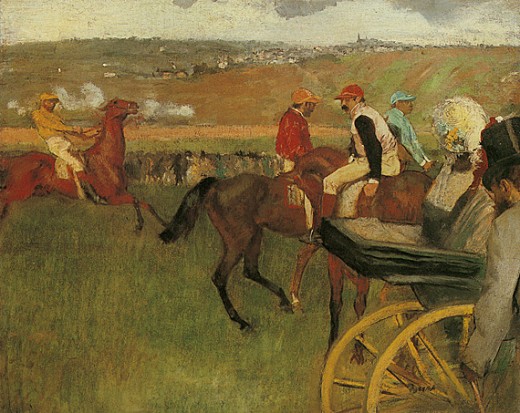
Daughter of Jephtha by Edgar Degas
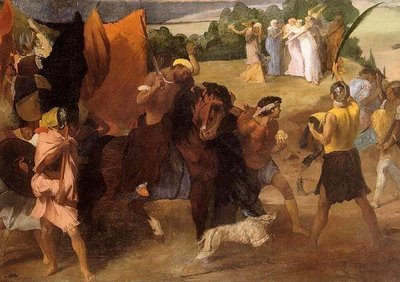
Edgar Degas: 5 Interesting Facts
1. Of all the Impressionist artists, Degas had the closest affinity with Edouard Manet. They were closest in age and both came from wealthy, Parisian aristocratic families whereas many of the others, like Monet and Renoir struggled to buy paint. Being the wealthier of the set explains why it is really only these two who spent time at the racecourses painting 'plein air' there. Racing was a new pastime that had recently come over the channel from England, and as such was a luxury that only the aristocracy could afford. Degas also spent some time with Manet in Boulogne where they painted outdoor landscapes, no doubt Manet was influencing Degas to adopt a more Impressionist style.
2. After travelling around Italy and viewing the work of the classical painters, Edgar Degas first found success painting historical and biblical canvases. It was his 1861 painting, Daughter of Jephtha that first got him recognition by the Parisian Salon and since he had no financial constraints that might hamper his ability to continually produce high quality works, he was able to quickly start earning himself a living. It was during his travels ,when he was copying the classical artworks, that he became skilled at drawing people and this allowed to him to earn some money painting family portraits on commission.
Ballet Dancers in Butterfly Costumes by Edgar Degas
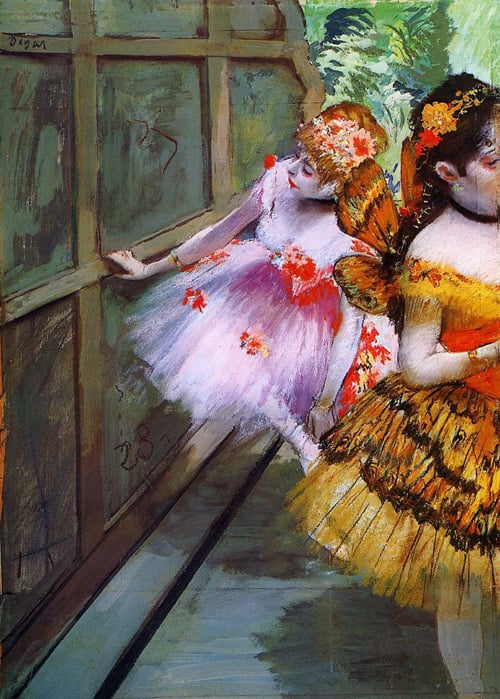
Dancers Bending Down by Edgar Degas
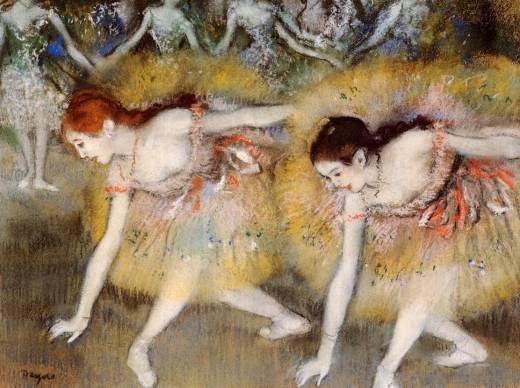
The Little Dancer aged 14 by Edgar Degas
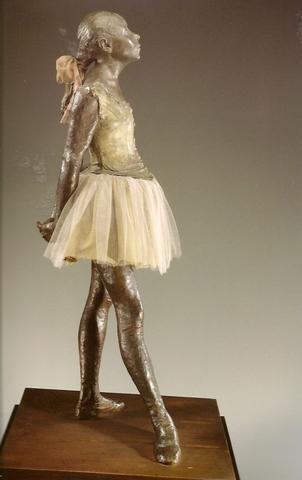
3. Edgar Degas is most famously known for painting ballet dancers. Up until the 1870s he really struggled to find any real direction to his work; he was interested in the human form, had painted historical and biblical scenes as well as portraits and had experimented with the Impressionist ‘plein air’ but he hadn’t found his niche that really made him stand out uniquely until he started painting ballet dancers. When you look at many of his paintings you notice that the dancers on the edge of the canvas are often partially cut off, which achieves the very difficult feat of giving the impression of movement in a painting. A good example of this is the ‘Ballet Dancers in Butterfly Costumes,’ which always appears to me like you are being given a glimpse of a very busy backstage life when in fact they are most likely to be models in his studio.
4. Edgar Degas participated in all eight of the Impressionist exhibitions after rejecting the constraints of the Paris Salon, but his work stood out from the other Impressionist artists. While their paintings were generally landscapes or gentle portraits of each other or standard models, Degas’ were more striking, bolder and captured real life, whether it was a grandeur scene from an opera or ballet or back alley squalor. His perspective was different from the other Impressionists, he was no doubt more complex and not so concerned with making his paintings pleasurable to look at, instead looking to highlight contrasts in what he saw; he was never described as encapsulating a conventional sense of beauty.
5. In the late 1870s Degas' sight began to fail and as well as painting he began sculpting bronze statues of ballet dancers and horses, something which he had been quietly experimenting with for several years. One of his most famous bronze statues is ‘The Little Dancer aged 14’. Even in this new medium he still manages to capture that same sense of movement that he portrayed in his paintings. Unlike most other painters, Edgar Degas didn’t paint up to the day he died. With his failing eyesight it became harder to paint and he eventually gave it up after being forced to move studios. Instead he contented himself with buying the art of his contemporaries and spent a lot of time locked in the memories of these and his own works of art. On the 27th September 1917 Degas died in Paris, many believe he had isolated himself from his circles of friends and died a lonely eccentric.


